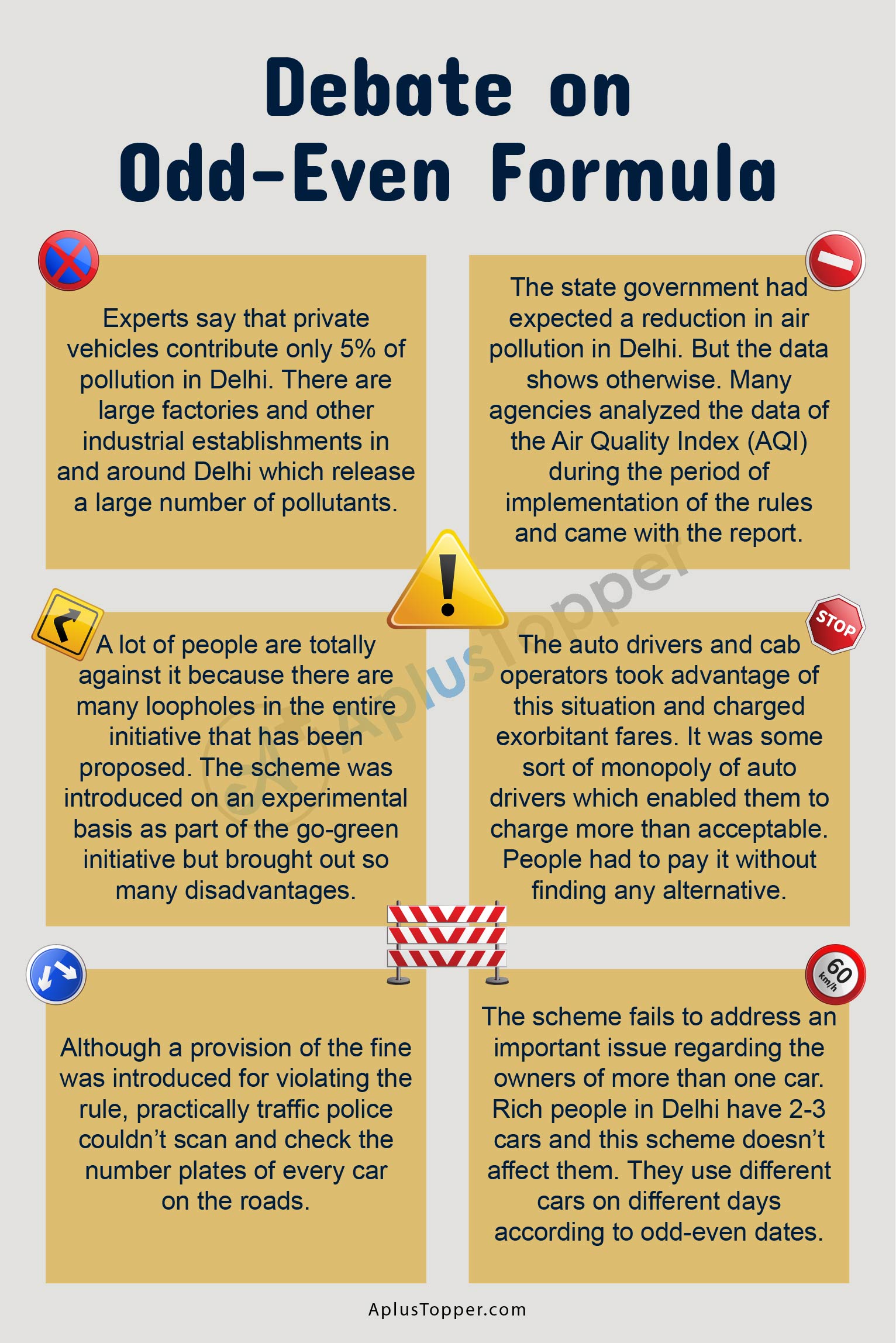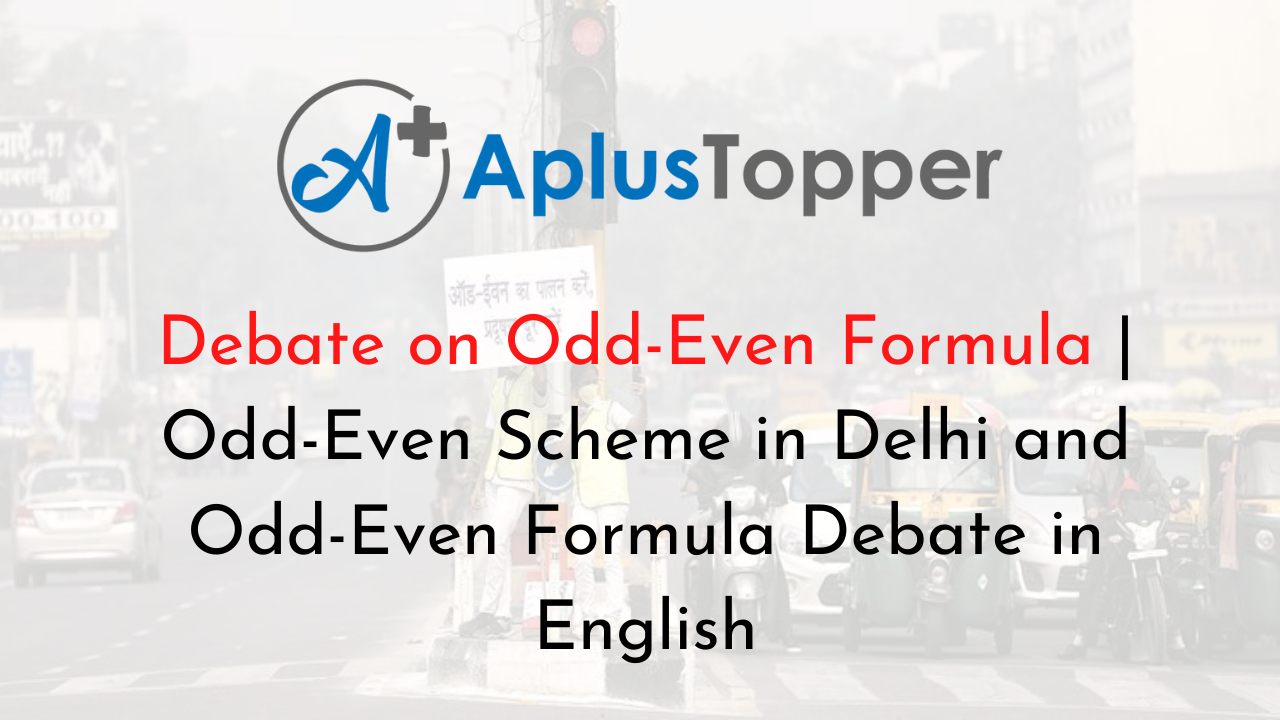Debate on Odd-Even Formula: A thorough understanding of odd-even traffic rules in Delhi and various disadvantages associated with its implementation.
Good Morning, honorable judges, respected teachers, and my fellow opponents and dear friends.
Today, I _________is here to convey my thoughts on a much-debated and largely discussed topic. This is the implementation of odd-even rules in traffic in the national capital of New Delhi. By now we all are aware of this system and I am going to speak against the motion to point out the disadvantages associated with the implementation of this rule in New Delhi.
You can also find more Debate Writing articles on events, persons, sports, technology and many more.
In 2016, the Arvind Kejriwal-led Delhi government had introduced the odd-even scheme in traffic rules in New Delhi. The initiative was taken in an attempt to reduce traffic congestion and tackle the extreme level of pollution arising out of the traffic.
Now At the beginning of the debate on odd-even rules, we must know what is this odd-even scheme? It is a traffic rotating formula under which the private vehicles have to ply based on the last digit of their number plates. The private vehicles with registration numbers ending with an odd digit will be allowed on roads only on the odd dates of a month. Similarly, the private vehicles with even last digit numbers on their number plates can move on roads only on the even dates of the month. However, Sunday was exempted from this scheme.
The Delhi government has reintroduced the odd-even scheme to combat hazardous levels of pollution in the city, as Delhi experienced some of the worst Air Quality Index in the last few years. But the great debate on the odd-even rule raises various issues on the practical aspects of implementing the rule. Also, there were serious doubts about how far this scheme can curb pollution levels.
The state government had expected a reduction in air pollution in Delhi by reducing the number of cars on the road. But the data shows otherwise. Many agencies analyzed the data of the Air Quality Index (AQI) during the period of implementation of the rules and came with the report. The reports indicate that there is hardly any impact on the pollution level of Delhi with this odd-even scheme.
In this debate on odd-even rules, my worthy opponent can see this as a great move by the government; but I must say that a lot of people are totally against it because there are many loopholes in the entire initiative that has been proposed. The scheme was introduced on an experimental basis as part of the go-green initiative but brought out so many disadvantages.
There can always be a debate on odd-even rules but I must say this is a very one-track approach. Cars can’t be the only source of air pollution in cities like Delhi. Experts say that private vehicles contribute only 5% of pollution in Delhi. There are large factories and other industrial establishments in and around Delhi which release a large number of pollutants into the air every day. Another reason is the burning of crops and garbage from neighboring states. A major contributor to poor air quality is the burning of firecrackers, especially during Diwali. So it can be rightly said that the odd-even rule was not a very judicious way of handling the pollution problem.
A lot of problems become very prominent with the implementation of the odd-even rule. But there were no suitable measures by the Delhi government to handle it. The main disadvantage which I want to highlight in this debate on odd-even rules, is that the odd-even scheme leads to extreme inconvenience to the common people like office goers. People with private vehicles can’t afford to stay at home and have to use public transport. But the transport system was not robust enough to accommodate such a large influx of people. Metro rail was also not well connected to every part of Delhi. It means, people who usually rely on their vehicles had to face severe inconvenience.
The auto drivers and cab operators took advantage of this situation and charged exorbitant fares. It was some sort of monopoly of auto drivers which enabled them to charge more than acceptable. People had to pay it without finding any alternative.
In the debate on odd-even rules, we find another loophole in this system. Although a provision of the fine was introduced for violating the rule, practically traffic police couldn’t scan and check the number plates of every car on the roads. Traffic police had neither sufficient nor competent personnel to ensure the perfect implementation of this scheme. Traffic rule violation is a common practice in Delhi-NCR so it is too much to expect that people will honestly follow the scheme. On the other hand, the provision of imposing fines makes corruption on the rise with the increase in bribery.
The scheme fails to address an important issue regarding the owners of more than one car. Rich people in Delhi have 2-3 cars and this scheme doesn’t affect them. They use different cars on different days according to odd-even dates. There have also been instances of number tampering which increases these days.
Moreover, there were a lot of exemptions in this odd-even rule like vehicles of VIPs, Ministers, Judges, Lok Sabha and Rajya Sabha members, Governors, and Chief Ministers. We know in Delhi, a large part of traffic includes vehicles used by VIPs only so the actual objective behind this rule loses importance.
In this debate on odd-even rules, we must agree with the fact that this is not a long-term solution to reduce air pollution in a metropolitan city. There is an increase in the number of vehicles day by day and this odd-even rule can’t reduce vehicles significantly on the road. This scheme is not a permanent solution to rapidly increasing air pollution.
The hot debate on odd-even rules that has been raised is that the Delhi government introduced the odd-even traffic rules based on some ideal situation and considered the positive aspects only. In this process, it fails to focus on the practical hurdles in the way of implementing this rule. They did not make sufficient study on ground realities. Perhaps they were in a hurry to implement this idea which was innovative enough for India but does not suit the infrastructure.
Other countries like China, which have gained some advantages from the odd-even traffic rule, have very sophisticated and robust traffic systems. The administration in Delhi should consider all such factors before trying this scheme which requires a first-class transport system for successful implementation. Instead of imposing restrictions on the movement of vehicles, the real focus should be on cleaner cars, eco-friendly fuels, and reducing other sources of pollution.

FAQ’s on Debate on Odd-Even Rules
Question 1.
When the odd-even rule was implemented for the first time and last time in Delhi?
Answer:
The odd-even traffic rule was first implemented in 2016 by the Delhi government, in two phases-one from January 1-15, 2016, and the second is from April 15-30, 2016. The last and third phase of the odd-even scheme was implemented in Delhi during November 4-15, 2019.
Question 2.
What was the fine for rule violation under this scheme?
Answer:
A fine of Rs.4000 would be charged for violation of the odd-even traffic rule.
Question 3.
Who was exempted from this scheme?
Answer:
Two Wheelers, Women drivers driving alone or with a child less than 12 years of age, Private vehicles who are transporting school children during school time, Vehicle of people with disabilities, Vehicle of President, Vice-President and other important dignitaries of government.
Question 4.
Does this scheme bring any visible advantages as appreciated by people?
Answer:
The odd-even rule decreased the number of vehicles on road and reduced traffic jams which made the movement of cars faster on roads.
Question 5.
Why was the odd-even rule not much successful in curbing air pollution in Delhi as intended?
Answer:
Delhi has the highest level of air pollution caused by various sources other than traffic. So a reduction of vehicles on the road had a very little effect on controlling air pollution.
